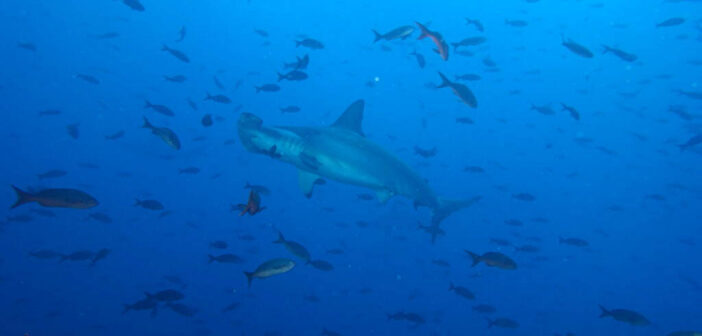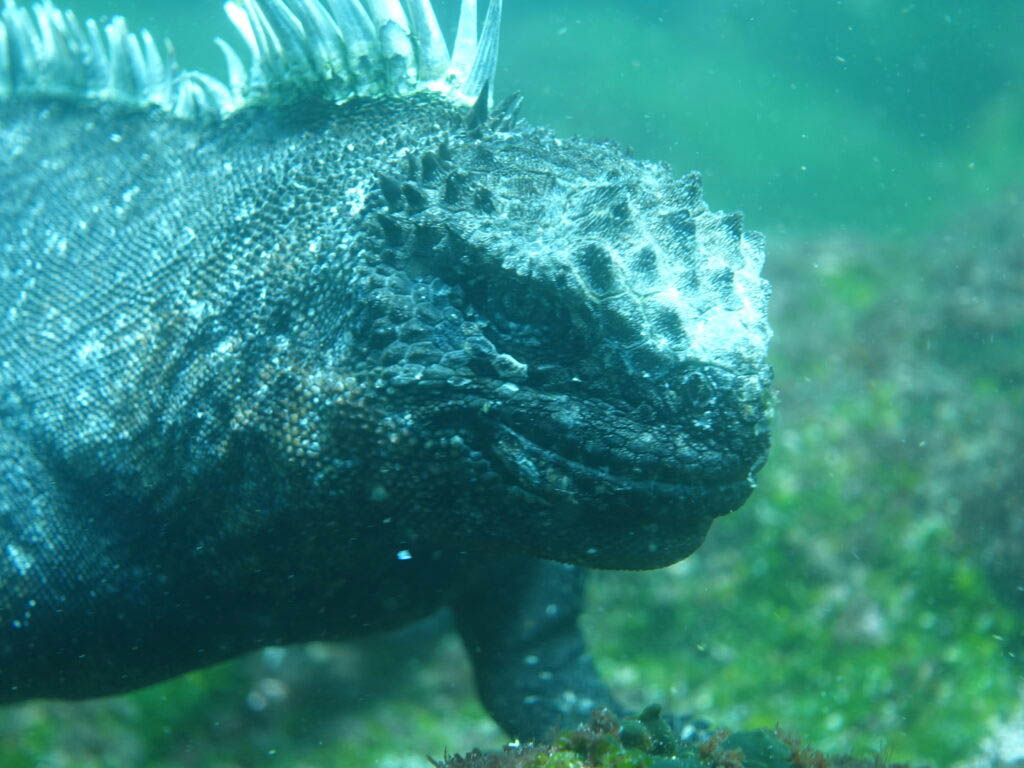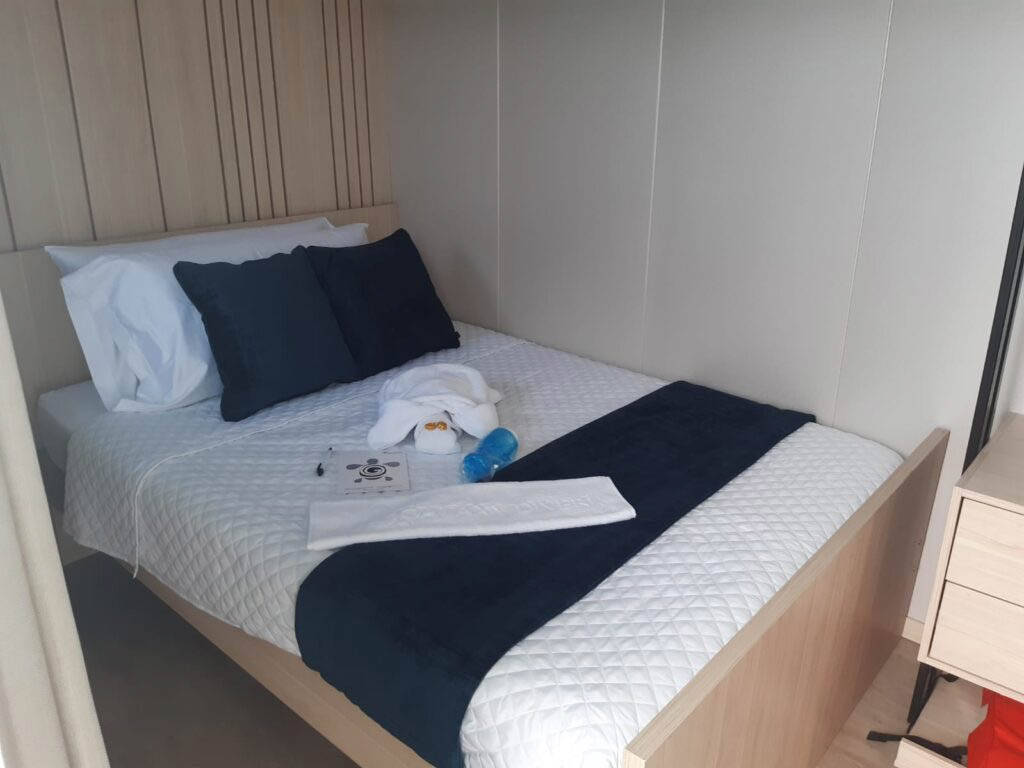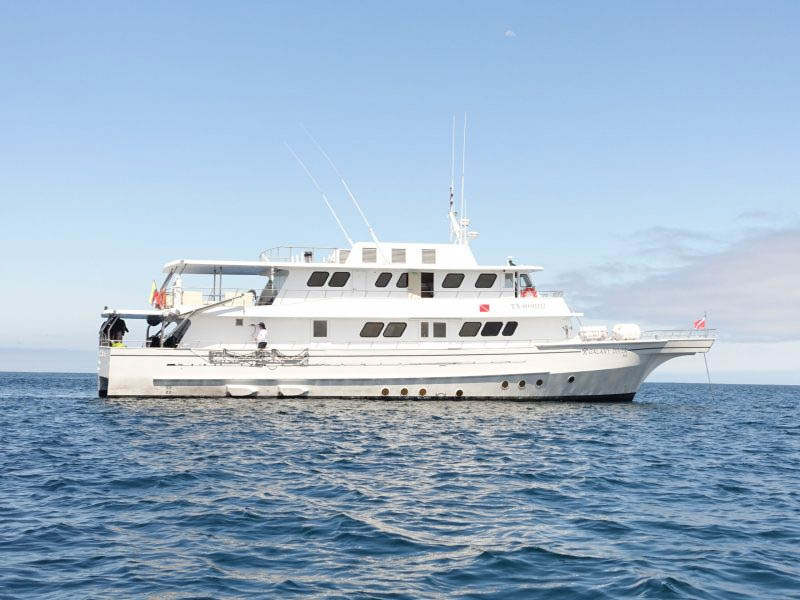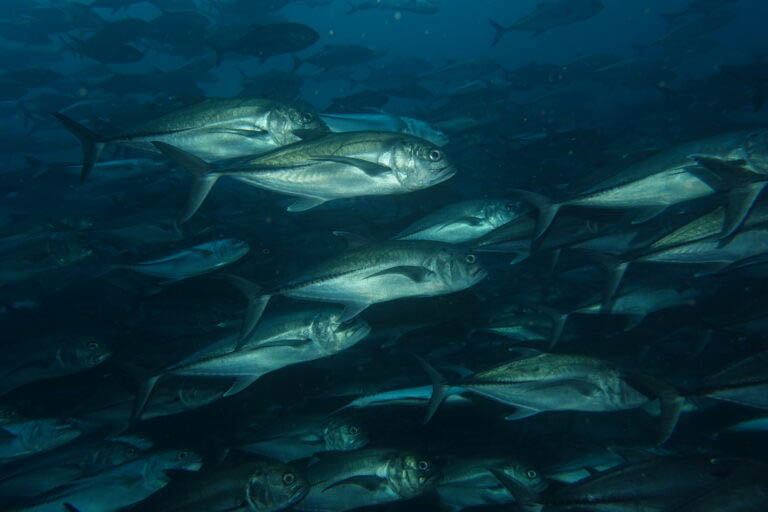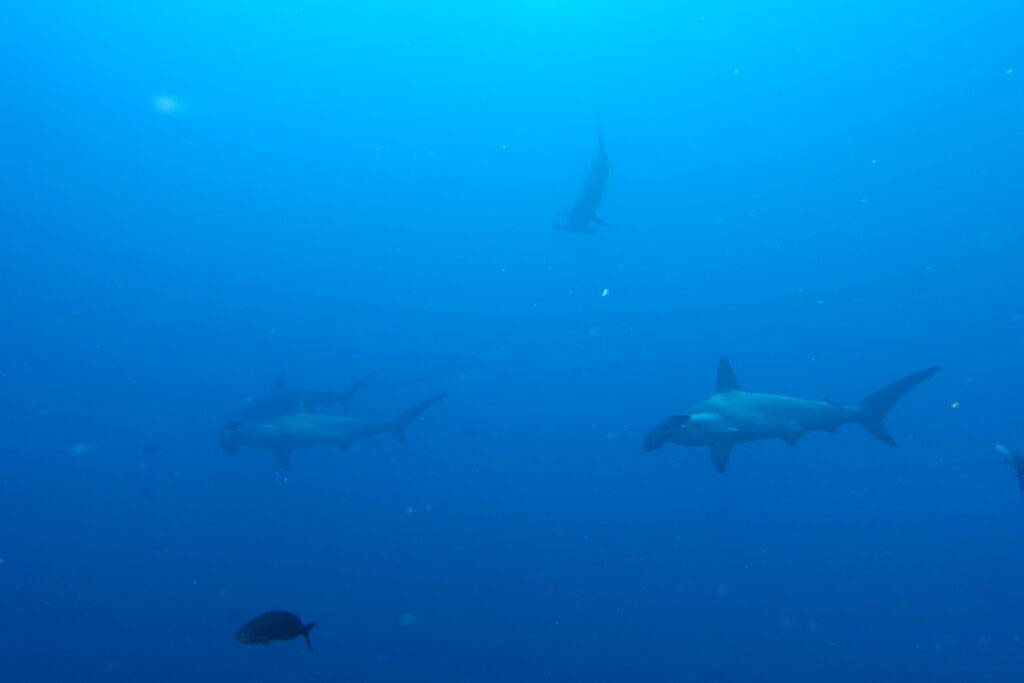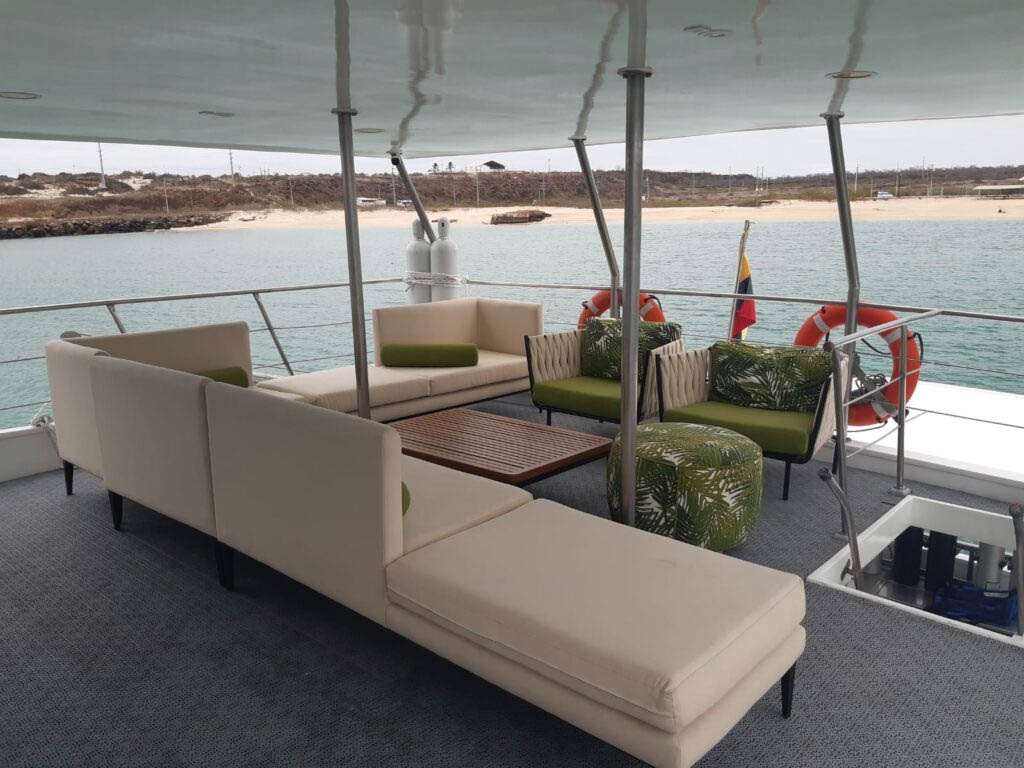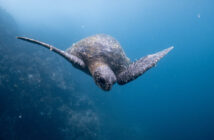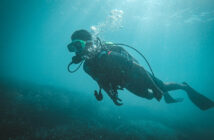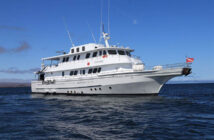WHY THIS PLACE IS SO VALUABLE TO US. AND WHY WE NEED TO TREAT OTHER PLACES LIKE IT
As far as records show, the Galapagos Islands were first stumbled on by Fray Tomás de Berlanga in 1535, when he first discovered the archipelago after sailing from Panama, with Ecuador as his intended destination. Protection is proving successful here and fortunately, as I was recently able to see with my own eyes, the Galapagos Islands is not short of biodiversity. Despite the urgent call for protection of species around the globe, which is undoubtedly and unavoidably a result of human impact, there are places which provide a safe-haven for other forms of life to live full and healthy lives, seemingly bearing less of the bain of the negative impacts of our actions. Of course, nowhere is completely sheltered from the industrial scale pollution, fishing and trophy hunting that takes place every second around the clock, but through my experiences, I hope to share about the potential beauty, growth and abundance that can be achieved with the cost of a little attention and a few amendments.
After being shown to our rooms and given a tour of the boat, we enjoyed our first lunch together, followed by the check dive which, although modest, still presented us with an array of marine life including some nudibranchs and a white tip shark. Post dive we were served with hot tea, a home-made snack and embarked on our 18-hour cruise to Wolf Rock where we would spend the first full day of diving. Excitement was flowing through the boat about what would be in store. I awoke with the sunrise, took my morning coffee, and headed up to the bow where, as we approached Wolf Rock, we were joined by a pod of dolphins riding the wake of the boat, swimming sideways and jumping within inches of the front, as is there nature. This would become normality over the coming days, and it was rare not to see them swimming around the vessel or leaping in the distance during the surface intervals. After a detailed briefing about what to expect for the day, the underwater etiquette we should display to respect the environment as well as having the best possible chance of wildlife interaction, we were ready to gear up and roll in. With 12 divers on board, groups were kept to maximum of 6, although it’s worth noting as the maximum capacity on board the Galaxy Diver is 16, it may be that groups are made up of 8 people. Therefore, it’s important to practice good buddy techniques at all times, regardless of your certification level or experience (considering the conditions are frequently challenging).
WOLF ROCK
Upon descent, it was around 25 seconds before we were surrounded by Hammerhead and Galapagos sharks. Finning down from the plateau to the edge of the slope in a medium current, which was requiring a mild effort and good positioning to move through, we formed a staggered line between 15-25 metres. Look into the blue, sharks. Peer up to the surface, sharks. Glance behind to see what’s there, seawater, followed by more sharks. We spent 45 minutes as watching 2-3m hammerheads and 3m+ Galapagos sharks glided through the current, occasionally making their way to the rocks to request a clean from the wrasse and butterflyfish who were ever-waiting to provide their service, as well as to get a better look at us (which was great, as we also got a better look at them). As with most marine life, I found it better to either mimic them by trying to swim effortlessly into the current, not moving forward but just holding my position. Or anchoring my finger to one of the rocks and moving as little as possible, just breathing, and absorbing the moment. This way they are more likely to approach you and see you as less of a threat, than if you are frantically using all 4 limbs in an attempt to beat the current or going out to them in order to get a close-up view or photo. They will simply swim away.
Whilst there was also a handful of Giant Moray Eels, Cortez Rainbow Wrasse and an assortment of Triggerfish, among many other species, the sharks did have centre stage, which rung true throughout the group when we rendezvoused for breakfast after the first immersion was complete. Although visibility dropped throughout the day (and is commonplace throughout the year – photographers take note!), it still made for some eerie and exciting encounters. Drifts through the current became a task of navigating large boulders, schools of Jacks that blocked the sunlight as you approached, and occasionally taking shelter behind rocks to see one or two sharks playing chase, on their way to wherever they are heading.
DARWIN’S PILLARS
Approaching the Pillars in the panga (the name for the rubber dinghy used for transporting us between sites and the mothership) there is a sense of eeriness. There are no palm trees or blue waters here. The wind blows the light rain onto my face and as the panga bounces through the swell, it feels like needles to the skin. The ocean we ride on is rough and black, clouds above us coat the sky and the sun barely shines through. I have over 2000 dives in various places around the globe, and even though I was anticipating this upcoming one, I would be lying if I said I didn’t feel a touch nervous. Between June and November, it is likely to encounter Whale Sharks on this dive site. I had not yet had any experiences with Whale Sharks (though not for lack of trying), and the reality really set in when during the briefing, we were given detailed instructions about the etiquette and instructions of diving this site, as it was highly likely one would grace us with its presence. Once we plunged onto the plateau beneath the towering arches, it took no more than 10 minutes at around 15m before Paolo heads out into the blue, signaling for us to follow. As I swim with the group through the schools of fish and gaze up, an enormous shadow emerges and cruising towards me is a 14m female whale shark. It’s hard to grasp how the sheer size of the world’s largest fish through words alone. All my imaginations of the stories I had heard and the images and videos I had seen were realized in that moment. She turned 90 degrees upon reaching the group and swam effortlessly past us. I could count every spot, every detail from mere inches away. The thought of how a new-born fish the size of my forearm can grow to this size is truly astonishing. Effortlessly gliding through the current, I struggled to keep up alongside it, my expression switching from smiles to gazing in awe. As if I wasn’t already convinced, I am now certain how important it is to work to keep this species protected.
3-4 dives on a single dive site can be a hard-sell in most locations for fear of repetition. With the variety of life here, and the melting pot of pelagic species it seems that 4 dives is certainly not enough.
FERNANDINA AND ISABELA
Fernandina is the western-most island and the most recently formed. What is responsible for the rising and reduction of the islands around the Galapagos is the ‘Galapagos Hotspot’. It is thought that particularly hot areas of magma sit below the surface of the Earth’s crust here, and is what encourages this continuous volcanic activity. The topography of the Galapagos Islands therefore changes somewhat frequently (although we’re talking over decades, centuries, and millennia here). What is most appealing to us as divers and explorers here, is the different forms of life that call it home. One thing I can say is we definitely know where the idea for Godzilla came from after visiting these wonderful creatures:
After basking in the sun until their bodies have heated enough, these marine iguanas dive into the ocean almost in unison, to feed on the algae that grows on the rocks between 1-20 metres. Though they look similar to a mythical beast about to cause havoc, they are docile, harmless and are content minding their own business. A photographer’s dream. Isabela Island is the largest of in the Galapagos and fringed by molten rock. Though fierce and daunting, it’s possible to see the gentlest fish in the ocean in a few dive sites around here, the oceanic manta ray. They can gather in the bays and are often seen cruising up and down the coast. I the right season, it’s also possible to spot mola mola’s as well, but we were not so lucky on this trip. Despite the incredible encounters with nature that you have read about here, I cannot recommend enough how important it is to experience this first-hand. I would challenge anyone not to visit this magical part of the world and not be moved by what there is to be seen, heard, and felt. It is clear why this is at the top spot of any diver’s list.
- Duration: 8D/7N
- Date: October 12-19, 2022
- Conditions: Weather: Sunny/overcast
- Surface: 21-23 Celsius Water: 17-24 Celsius
- Open sea: Fairly rough
- Bays: Calm




